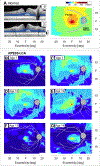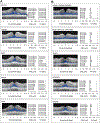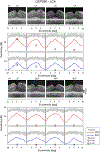Progress in treating inherited retinal diseases: Early subretinal gene therapy clinical trials and candidates for future initiatives
- PMID: 31899291
- PMCID: PMC8714059
- DOI: 10.1016/j.preteyeres.2019.100827
Progress in treating inherited retinal diseases: Early subretinal gene therapy clinical trials and candidates for future initiatives
Abstract
Due to improved phenotyping and genetic characterization, the field of 'incurable' and 'blinding' inherited retinal diseases (IRDs) has moved substantially forward. Decades of ascertainment of IRD patient data from Philadelphia and Toronto centers illustrate the progress from Mendelian genetic types to molecular diagnoses. Molecular genetics have been used not only to clarify diagnoses and to direct counseling but also to enable the first clinical trials of gene-based treatment in these diseases. An overview of the recent reports of gene augmentation clinical trials by subretinal injections is used to reflect on the reasons why there has been limited success in this early venture into therapy. These first-in human experiences have taught that there is a need for advancing the techniques of delivery of the gene products - not only for refining further subretinal trials, but also for evaluating intravitreal delivery. Candidate IRDs for intravitreal gene delivery are then suggested to illustrate some of the disorders that may be amenable to improvement of remaining central vision with the least photoreceptor trauma. A more detailed understanding of the human IRDs to be considered for therapy and the calculated potential for efficacy should be among the routine prerequisites for initiating a clinical trial.
Keywords: ABCA4; BCM; CNGA3; CNGB3; Gene therapy; Genetic retinal degenerations; Leber congenital amaurosis; MERTK; MYO7A; Molecular mechanisms; NPHP5; OPN1LW; OPN1MW; PDE6B; REP1; RLBP1; RPE65; RPGR; RPGRIP1; Retinitis pigmentosa; TULP1.
Copyright © 2019 The Author(s). Published by Elsevier Ltd.. All rights reserved.
Figures





References
-
- Acland GM, Aguirre GD, Ray J, Zhang Q, Aleman TS, Cideciyan AV, et al. Gene therapy restores vision in a canine model of childhood blindness. Nat Genet. 2001;28(1):92–95. - PubMed
-
- Aguirre G Retinal degenerations in the dog. I. Rod dysplasia. Exp Eye Res. 1978;26(3):233–253. - PubMed
-
- Aleman TS, Huckfield RM, Serrano L, Vergillio G, Pearson DJ, Uyhazi KE, et al. AAV2-hCHM subretinal delivery to the macular in choroideremia: 2 year results of an ongoing phase I/II gene therapy trial. Invest Ophthalmol Vis Sci. 2019;60(9):5713.
Publication types
MeSH terms
Grants and funding
LinkOut - more resources
Full Text Sources
Other Literature Sources
Medical
Research Materials
Miscellaneous

